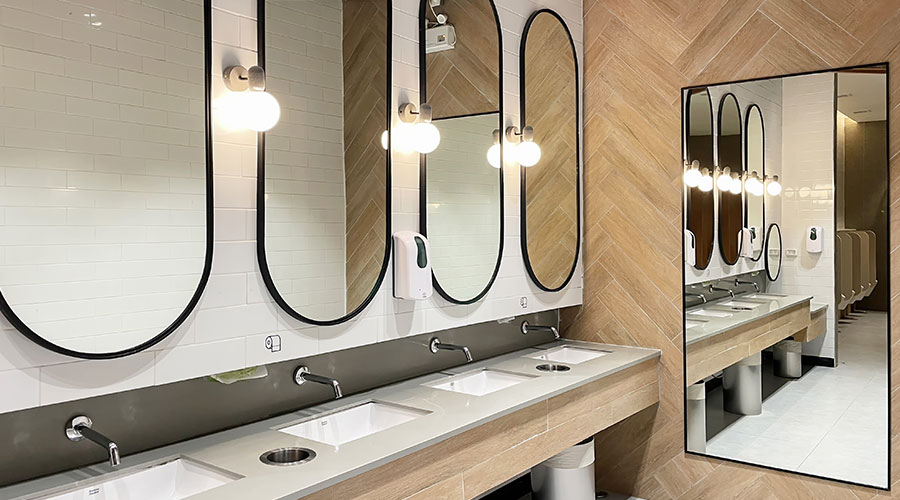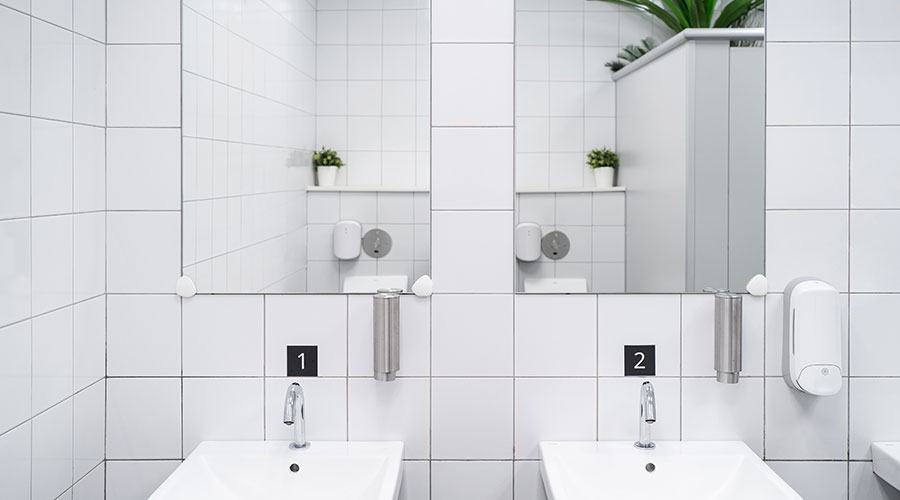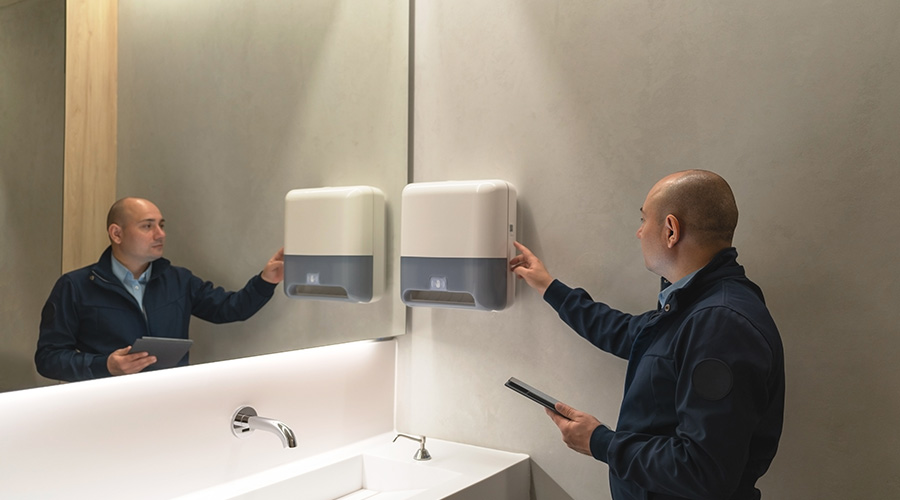State Codes, LEED Tighten Water Efficiency Standards
OTHER PARTS OF THIS ARTICLEPt. 1: This Page
Lately, there has been a veritable crescendo of activities at the national level regarding water efficiency. New codes and standards will impact the way facility executives plan water efficiency projects, specifically, but also whole-building operations in general.
The first question may be why there is this emphasis on water. Facility executives may have thought that "going green" meant one thing and one thing only: energy efficiency. The truth is that water is now on the radar screen for a number of reasons beyond simply the droughts that have occurred all over the country the last several years. Since 2001, water and wastewater costs have risen 1.45 times faster than electricity costs, according to the United States Consumer Price Index.
Both the availability of new freshwater supplies and rising water and wastewater treatment costs to meet ever more stringent drinking water and wastewater treatment levels are all contributing to these rapidly rising costs. Furthermore, the Environmental Protection Agency (EPA) predicts that 37 states will have non-drought-related water supply shortages of some type by 2013.
For these reasons, many new initiatives have been created to ensure a more water efficient future. Facility executives should be aware of these initiatives, which fall into three categories: regulatory and legislative initiatives, including new codes and standards; updated green building initiatives; and assistance and information programs.
Regulatory and Legislative Initiatives
At both the national and state level, legislatures are passing water efficiency regulations. For example, the Energy Policy Act of 2005 established the current federal standards for plumbing fixtures. It also set efficiency standards for water-using appliances, such as commercial clothes washers, pre-rinse spray valves and automatic ice makers, and provided tax incentives for efficient clothes washers and dishwashers. Currently, there is not a set date for updating this legislation, but changes are expected in the near future. In 2009, there are at least ten House of Representative bills and three Senate bills relating to water efficiency.
As another example of activity at the federal level, on Jan. 24, 2007, President George W. Bush signed Executive Order 13423. It mandates that all federal facilities reduce water use by 16 percent by 2015.
States from coast to coast have also passed major water efficiency legislation in recent years. Texas and California now have laws mandating that all tank-type toilets use no more that 1.28 gallons per flush by 2014. One-third of states have some type of water-efficiency regulation.
Beyond that, city and local authorities far too numerous to count are enacting ordinances ranging from landscape irrigation design requirements to local plumbing code amendments requiring increased water efficiency.
National codes and standards are constantly being modified to reflect the demand for greener codes by local officials, legislation and professional organizations. These will represent future building standards for the nation. In addition to plumbing fixture requirements, other areas that will be covered include metering and measurement, use of alternate on-site sources of water, new landscape irrigation standards, and requirements for water-using equipment including food service equipment, medical equipment, water treatment equipment, and laundry equipment.
The major code body activity includes:
- International Association of Plumbing and Mechanical Officials (IAPMO) will issue its draft Green Plumbing and Mechanical Code Supplement for review in early 2010. It will be the first major new "green" code for the nation to incorporate the many advances in water conservation now under way.
- The International Code Council (ICC) just initiated a process to revise its code to make it green. This will include major water efficiency components.
- The American Society of Heating, Refrigeration, and Air Conditioning Engineers (ASHRAE) has developed the Standard Project Committee (SPC) 189 Standard for the Design of High-Performance Green Buildings and is developing SPC 191 standard specifically for water efficiency.
- NSF International has just begun an effort to establish treatment standards for the use of on-site sources of water ranging from rainwater and swimming pool filter backwash water to the treatment of all wastewater from the building for toilet and urinal flushing use.
Green Building Rating Systems
For many facility executives, the U.S. Green Building Council's LEED rating system has become the standard for judging a green building. The rating system provides criteria and benchmarks for all aspects of green design, operations and maintenance of buildings, including water efficiency.
The LEED 2009 rating system — released this past April — illustrates the migration to more stringent plumbing standards as it contains more emphasis on water efficiency than before. Under LEED 2009, a 20 percent reduction of in-building water use below the baseline for a standard building is a prerequisite for any certification. In the previous version of LEED, the 20 percent reduction had been an optional credit. (See "LEED Tightens Water Efficiency Requirements" on page 10.)
Other new LEED rating system products include LEED for Schools and LEED for Healthcare. As LEED continues to evolve, with another update to the rating system expected in about two years, there is little doubt it will include additional water points and requirements.
The Green Building Initiative's (GBI) Green Globes rating system is also beginning to gain momentum. The new GBI system allows for 158 points out of 1,000 for water when the water efficiency credits in the Sites section are considered. (See "Water Efficiency Scores Green Globes Points" at bottom left.)
New Assistance and Information Programs
Just as important as the voluntary rating systems are the programs available from EPA. Most facility executives are familiar with the Energy Star Program, which provides information on energy-efficient products. In a similar vein, the newer EPA WaterSense program certifies water-efficient fixtures and appliances and is developing additional water conservation information programs. Of special note is a new initiative — the WaterSense program just began to explore ways that EPA can help promote water efficiency in the commercial and institutional sectors.
As with energy efficiency, there are many consulting firms that can help make a facility water-efficient and help reduce water and wastewater bills. Services range from performance contracting to design-build to simply providing advice. Many cities and water utilities also offer resources, as well as rebates and other financial incentives, to become more water-efficient. In addition, some of the new federal initiatives offer water efficiency as well as energy efficiency and financial tax incentives.
Organizations like the Building Owners and Managers Association, the International Facility Management Association and the Center for Health Design may have water efficiency articles, programs and guides.
Finally, no water efficiency information and resource discussion would be complete without the mention of the Alliance for Water Efficiency (allianceforwaterefficiency.org) and California Urban Water Conservation Council (CUWCC.org). These organizations are clearing houses for all types of water conservation information.
Facility executives should use the available resources to become aware of the many changes occurring regarding water efficiency. By taking advantage of the benefits and being aware of upcoming regulatory and code changes, facility executives can both reduce future operating costs and increase the marketability of their facilities.
Bill Hoffman, principal of H.W. (Bill) Hoffman and Associates, LLC, and senior technical advisor for Water Management, Inc., has more than 40 years of water conservation and water resource planning experience. He has been involved in the development of water conservation legislation and in the development of new rating tools for both the U.S. Green Building Council's LEED program and the Green Globe's Green Building rating systems. 
LEED Tightens Water Efficiency Requirements
| |
OLD (Version 2.2) |
NEW (LEED 2009) |
| 20% reduction in building water use |
Optional |
Required |
| Private Labatory Faucets* |
2.5 gpm at 80 psi |
2.2 gpm at 60 psi |
| Public Lavatory Faucets* |
2.5 gpm at 80 psi |
0.5 gpm at 60 psi |
| Residential Kitchen Faucets |
2.5 gpm at 80 psi |
2.2 gpm at 60 psi |
| Showerheads |
2.5 gpm at 80 psi |
2.5 gpm at 60 psi |
| Pre-rinse Spray Valves |
n/a |
1.6 gpm at any psi |
| Toilets |
1.6 gal./flush (3.5 gal./flush for blowouts) |
Same |
| Urinals |
1.0 gal./flush |
Same |
| Metering Lavatory Faucets |
0.25 gallons per cycle |
Same |
*Public lavatories are found in all public restrooms and places. Private lavatories are found in hotel rooms and residential settings only.
Water Efficiency Scores
Green Globes Points
| CATEGORY |
POINTS |
| Project Management |
100 |
|
Sites (including 28 points for
irrigation efficiency)
|
120 |
| Energy |
300 |
| Water |
130 |
| Resources and Materials |
145 |
| Emissions and Storage of Hazardous Materials |
45 |
| Indoor Air Quality |
160 |
| TOTAL POINTS |
1,000 |
| POINTS FOR WATER |
158 |
Related Topics:












